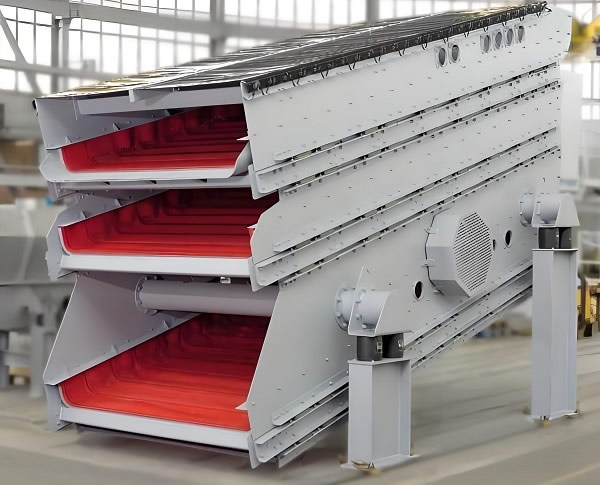
The flip flow screen is a combination of circular vibrating screen screening technology and toothed screen technology, consisting of vibration box, screen box, intermediate shaft, driving device and spring, etc. It has the characteristics of high elasticity, smooth vibration and compact structure. The polyurethane elastic screen makes continuous relaxation movement through the resonance principle, so that the acceleration of material throwing can reach 30-50 times of the acceleration of gravity, solving the...
The flip flow screen is an effective solution to the complex and diverse screening requirements of construction waste aggregates, and is mostly used for wet material screening applications.
The working principle of the flip flow screen is that a single drive provides a double vibration: the circular vibration generated by the rotation of the eccentric block is the basic vibration and the oval vibration generated by the floating screen frame is the additional vibration. The polyurethane elastic screen surface is mounted at both ends on the floating beam and the fixed beam of the floating screen frame. The polyurethane elastic screen surface expands and contracts continuously during the screening process to obtain a high vibration intensity, thus effectively preventing blockage of the screen holes.
The galloping screen is mainly composed of a box type exciter, a main vibrating screen frame, a floating screen frame, a shear spring, a damping spring, a flexible polyurethane screen mesh, a support, and a driving device. The operating amplitude trajectory is a straight line. The relaxation screen adopts the principle of double mass near resonance, and a single drive generates double vibration. The main vibrating screen frame is driven by excitation force to perform basic vibration, and the floating screen frame and the main vibrating screen frame are connected to a shear spring to perform relative motion in a near resonance state.
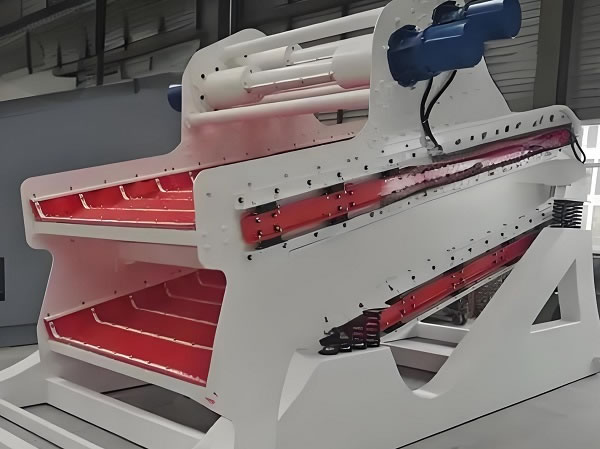
When choosing a relaxation screen, multiple factors need to be considered comprehensively to ensure that the most suitable equipment for your needs is selected. Here are some key purchasing points:
1. Select the appropriate screening accuracy based on the particle size requirements of the material to ensure product quality.
2. Select appropriate processing capacity based on production needs to ensure that the equipment can meet production requirements.
3. Understand the screening efficiency of the equipment to ensure that it can efficiently complete the screening task.
4. Consider the processing capability of the equipment, including the types of materials it can handle, humidity, viscosity, and other factors.
5. Choose reliable relaxation screen brands and suppliers to ensure the performance and durability of the equipment.
Few rotating parts, high operation reliability, small maintenance workload and high utilization rate.It is fixed on the hollow rubber spring with good vibration reduction effect, low noise and long service life.
The screen plate does not need any bolts for fixation, with long service life, convenient for disassembly and quick in replacement.
The amplitude of the screen frame is adjustable, the screen hole is not easy to block, and the materials difficult to screen can be screened with high screening efficiency.
The relaxation screen uses high-strength mesh material to ensure the stability and wear resistance of the mesh. This type of sieve not only performs outstandingly in solving large particle impurities during the filtration process, but also effectively blocks the permeation of small particles, improving the efficiency of solid-liquid separation. Moreover, the screen mesh is not easily damaged during long-term use, greatly extending the service life of the equipment.
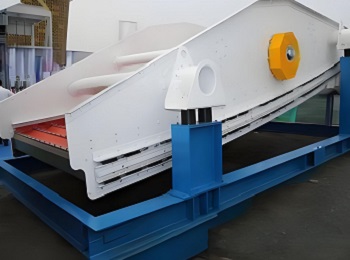
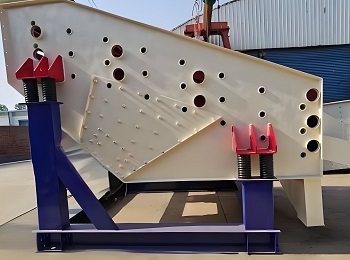
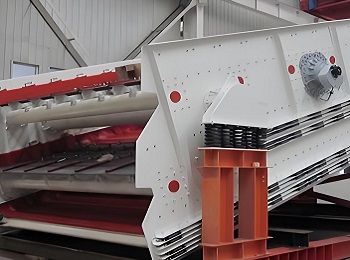
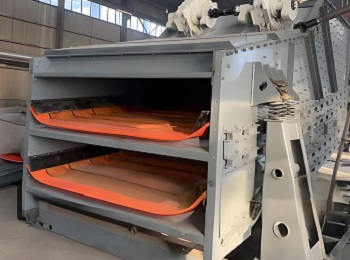
The working principle of the relaxation screen mainly relies on the tension and vibration of the screen mesh to achieve material screening. Specifically, the relaxation screen works through the following steps:
Apply tension: The mesh of the relaxation screen is fixed on a frame, and tension is applied through a tensioning device to create a certain tension on the surface of the mesh. This tension facilitates the movement and separation of solid particles on the sieve.
Solid liquid feeding: The material (usually a solid-liquid mixture) enters the screen area through the feeding port, and the solid particles are blocked by the screen mesh, while the liquid flows into the collection tank below through the pores of the screen mesh or is discharged through the discharge port.
Screening process: Under the action of screen tension, solid particles begin to be screened. Particles of different sizes form different layers on the sieve, with smaller particles falling through the pores and larger particles remaining above the sieve.
Solid liquid separation and collection: Through the screening process, solid particles and liquids are effectively separated. The separated solid particles and liquids are collected separately through collection tanks or sewage outlets for further processing or use.
In addition, certain types of relaxation screens (such as vibration relaxation screens) also utilize the high-speed rotational excitation force generated by vibration motors to continuously vibrate the screen body up and down, which helps to remove moisture from the material, achieve better dehydration effect, and enhance the efficiency and processing capacity of screening.

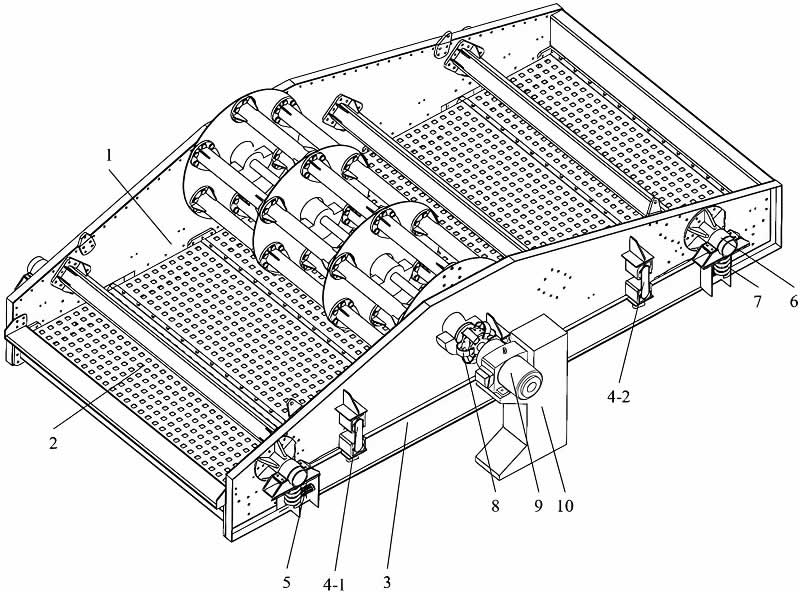
| Model | GNFS2461 | GNFS3061 | GNFS3085 | GNFS3673 | GNFS3690 | GNFS43100 |
|---|---|---|---|---|---|---|
| Screen surface area m2 | 14.64 | 18.3 | 25.5 | 26.28 | 32.4 | 43 |
| Vibration direction angle ° | 40 | |||||
| Vibration frequency Hz | 12.5~13.33 | |||||
| Power kW | 30 | 30 | 45 | 45 | 55 | 55 |
| Double amplitude mm | 12~16 | |||||
| Sieve size mm | 6~25 | |||||
| Processing capacity t/h | 110~440 | 200~550 | 260~700 | 300~800 | 350~900 | 350~950 |
| Screen inclination angle ° | 15~20 | |||||
| Model | GNFD2461 | GNFD3085 | GNFD3690 | GNFD43100 |
|---|---|---|---|---|
| Screen surface area m2 | 14.64×2 | 25.5×2 | 32.4×2 | 43×2 |
| Vibration direction angle ° | 40 | |||
| Vibration frequency Hz | 12.5~13.33 | |||
| Power kW | 30 | 55 | 55 | 90 |
| Double amplitude mm | 12~16 | |||
| Sieve size mm | 6~25 | |||
| Processing capacity t/h | 200~600 | 300~900 | 400~1000 | 600~1200 |
| Screen inclination angle ° | 15~20 | |||
*The output will vary according to different materials, feed particle size and other factors.
Save Time! Get A Detailed Quotation Quickly.
